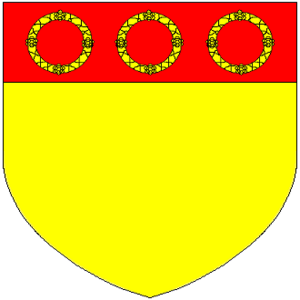Richard Morrison (ambassador) facts for kids
Sir Richard Morrison (also known as Morison or Morysine) (around 1513 – 1556) was an English scholar and diplomat. He was supported by Thomas Cromwell, who was a powerful advisor to the king. Morrison also worked as a writer for King Henry VIII, creating messages to support the king's ideas. Later, he became an ambassador to the German court of Emperor Charles V for Edward VI, who was Henry VIII's son.
Contents
Life
Richard Morrison was born in Hertfordshire, England. His father was Thomas Morison. Richard had a sister named Amy.
Early Years and Education
Around 1526, Richard Morrison went to Cardinal College, Oxford (which is now Christ Church). There, he met Nicholas Udall, who later became a famous teacher at Eton College and is known as a founder of English comedy.
Morrison finished his studies at Oxford in 1528. He then worked for Thomas Wolsey, a very important cardinal. However, he soon left Wolsey and traveled to Italy to study Greek. In 1532, he attended the University of Padua in Italy. He became a skilled scholar there, even though he didn't have much money. He was very interested in books and also held strong religious beliefs.
Working for the King
In 1536, Morrison wrote to Thomas Cromwell, saying he wanted to return home from Italy. Cromwell called him back to England and gave him an important job. Morrison became a writer for King Henry VIII. He wrote articles to support the king's actions, especially during a time of rebellion. For example, he wrote A Remedy for Sedition to respond to a major uprising called the Pilgrimage of Grace. Cromwell used many clever writers, including Morrison, to help spread the king's messages.
In 1537, Morrison received a position at Salisbury Cathedral. He also gained benefits from the Dissolution of the Monasteries, which was when King Henry VIII closed down many monasteries.
Diplomat and Later Life
In 1546, Morrison became an ambassador to the Hanseatic League, a group of trading cities. When King Henry VIII died, Morrison was sent to Denmark to announce that Edward VI was the new king.
In 1549, he was appointed to visit the university of Oxford. Before June 1550, he was made a knight, becoming Sir Richard Morrison. In 1550, he took over as the Ambassador to the Emperor, replacing Sir Philip Hoby.
Morrison traveled to Germany in July with Roger Ascham as his secretary. They often read Greek together. Morrison sent many long reports back to England. He also found time to travel around Germany with Ascham, who later wrote a book about their experiences. The Emperor often complained to Morrison about how Princess Mary was being treated in England.
After King Edward VI died, Morrison was called back from his role as ambassador. In August 1553, he and Sir Philip Hoby were recalled because they had made a mistake in a letter, referring to Guilford Dudley as king. The next year, Morrison moved to Strasburg with some friends. He spent his time studying there. He died in Strasburg on March 17, 1556.
Sir Richard Morrison died a wealthy man. He had started building a large house called Cashiobury in Watford, Hertfordshire.
What He Wrote
Sir Richard Morrison wrote several important works, mostly to support the king's policies. Here are some of them:
- A lamentation in whiche is shewed what ruyne and destruction cometh of seditious rebellyon (1536): This book criticized the Lincolnshire Rising, an uprising against the king.
- A remedy for sedition (1536): This was another attack on the Pilgrimage of Grace, a large rebellion.
- An Invective ayenste the great detestable vice, Treason (1539): This was written in response to the Exeter Conspiracy, a plot against the king.
- An exhortation to styrre all Englyshe men to the defence of they're countreye (1539): This encouraged English people to defend their country.
- The Strategemes, Sleyghtes, and Policies of Warre (1539): This was his translation of an ancient Roman book about war tactics by Sextus Julius Frontinus.
- A translation of the Introduction to Wisdom by Juan Luis Vives (1540 and 1544).
Morrison also suggested to King Henry VIII that popular plays about Robin Hood should be stopped. Instead, he thought plays should be created to show the "wickedness" of the Pope and monks. He believed that people remember what they see more than what they hear.
His Family
Richard Morrison married Bridget Hussey. After his death, she married two more times. Richard and Bridget had a son named Sir Charles and three daughters:
- Jane, who married Edward, Lord Russell, and later Arthur Grey, 14th Baron Grey de Wilton.
- Elizabeth, who married William Norris and later Henry Clinton, 2nd Earl of Lincoln.
- Mary, who married Bartholomew Hales.
Richard's son Charles (1549–1599) finished building the Cashiobury mansion. The estate later passed to Charles's son, Charles Morrison (1587–1628). After that, the estate went to the Capel family when the younger Charles's daughter Elizabeth married Arthur Capell, 1st Baron Capell of Hadham.


